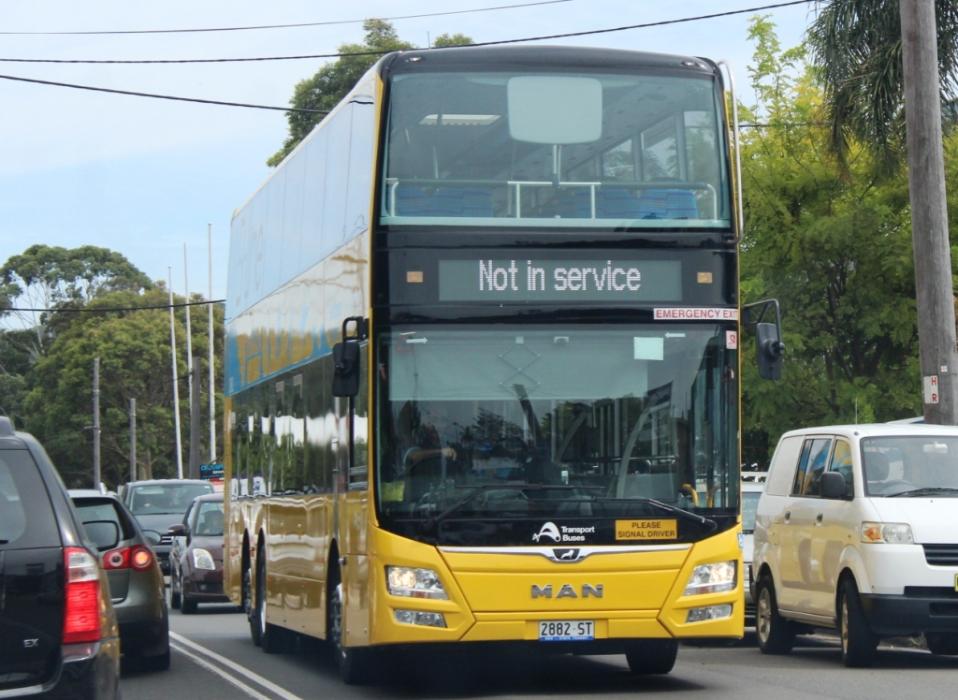B-Line Breakdowns Raises questions about Buses longevity: a way Forward in Wakehurst MP's Sights

Mr. Regan stated:
''The NSW Bus Industry Taskforce final report was evocatively titled The Forgotten Mode: a call to action for buses. On the northern beaches, buses are not only the forgotten mode but indeed the only mode. We do not have a train line, a light rail or a metro; we just have buses as our only form of public transport. It means the reliability of our bus services is extremely important. In fact, bus service reliability is the single most frequently raised issue by constituents to the Wakehurst electorate office. I am a passionate advocate for taking every step possible to invest in and improve our bus services now and in the future.
''Today I will talk about the B-Line, which is currently Sydney's only rapid bus route, running between the city centre and Mona Vale. Double-decker buses with lane and traffic signal priority run every three to four minutes in peak times, every 10 minutes off peak and half-hourly between midnight and 4.00 a.m. Since the B‑Line's introduction in 2017, end‑to‑end travel times have reduced by at least 15 per cent. Research suggests the B-Line has been responsible for taking at least 5 per cent of regular commuting cars off the roads between the northern beaches and the city. The B‑Line really is the golden child of bus services in our city. It has been a wild success and, as a regular passenger myself, I am absolutely part of the fan club. Indeed, I am proud to have been one of the many architects of that very successful service.
However, there is a risk the iconic B‑Line could become a victim of its own success. Keolis Downer, the private operator of the buses on the northern beaches route has raised serious concerns with me about the longevity of the B‑Line fleet, given its very high mileage per annum. The majority of the buses have clocked in excess of 650,000 kilometres, operating on average 100,000 kilometres per annum, when they were only designed to operate 60,000 to 80,000 kilometres per annum.
Keolis Downer anticipates the reliability of the service will become increasingly problematic as the fleet ages. It has informed me that it is starting to see some engine issues already due to the very high usage of the buses.
Procured in 2017, the double-decker buses have a life expectancy of 25 years, but Keolis thinks they could last for considerably less time. That concern from Keolis is consistent with findings from the Bus Industry Taskforce second report, which highlighted the systemic inadequacy of forward planning and forecasting in relation to bus fleet asset management. Recommendation 18 responded to this in proposing that Transport for NSW develop a 10‑year bus fleet replacement plan. The final report from the NSW Bus Industry Taskforce also included this statement:
While buses carry well over 40 per cent of all public transport passengers, they are budgeted to receive only 2.6 per cent of Transport's capital expenditure in the years FY2019 – FY2027. This compares to 49.9 per cent for rail/metro over the corresponding period.
We simply must invest more in buses. That message was loud and clear from the taskforce, and I will make sure the Government does not forget it. On that note, in the event that two‑way tolling is introduced on the Harbour Bridge, which I am 100 per cent opposed to for so many reasons, that money should be used to invest in buses to increase public transport options for northern Sydney. Those options could include new double-decker B-Line buses as needed. I call on the New South Wales Government to undertake an independent and rigorous assessment of the fleet's condition and to take steps to invest in new diesel, Euro 6 emissions standard, double-decker buses as soon as possible. Keolis Downer is of the view that those buses could be sourced within 12 months. We must build contingencies into our bus fleet management system.
We must be able to respond to and fill service gaps quickly when they arise. That means scanning the horizon, anticipating problems and having the capacity in the system to respond. That need was demonstrated all too vividly in recent weeks when all the articulated bendy buses were taken off the road at short notice. Services were filled with other buses from across Sydney, but not without significant disruptions to commuters. Given all the B-Line buses were purchased at the same time, they will start showing age-related reliability issues at about the same time. Unlike other routes, there are no alternative double-decker B-Line buses to substitute them with. Losing B-Line capacity would be crippling for northern beaches communities, so replacing those buses in a staggered approach would minimise that risk.
I commend the Government for investing in electric buses. Brookvale will be the first to roll out those buses, but they will not replace the double-deckers or bendies.
Northern beaches residents will be glad to know that I will make a beeline for the Minister for Transport and the Treasurer on the matter. I have written to Minister Haylen explaining my concerns, and I look forward to meeting with her to discuss them further.''
From September 2024 Community News:

B-line at Warriewood. Photo: Joe Mills